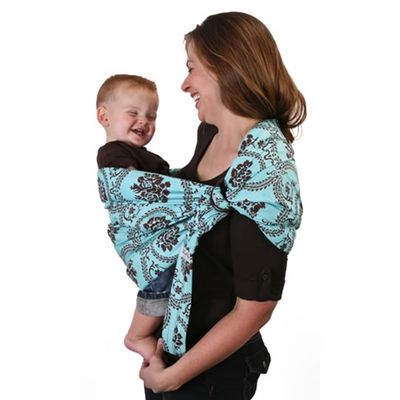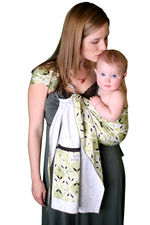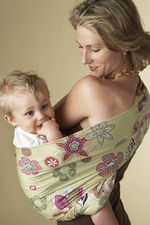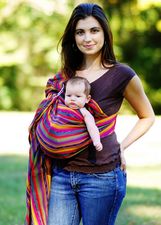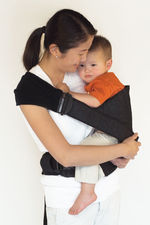Baby Sling & Carrier Manufacturers Speak Out on Safety Warning
The Giggle Guide® received the following public announcement from a concerned group of businesses who manufacture baby slings and carriers. Given the recent CPSC government warning on baby carriers and the Consumers Union’s concerns about “bag-style” carriers, the companies providing the following information are taking a stand to help educate the public on the differences between safe and unsafe baby carriers.
Bag-Style Slings May Be Unsafe
The ancient practice of babywearing made its way into western culture in the 1960s and its popularity with American consumers has grown because of its vast benefits. Unfortunately, this has led to the creation of several potentially unsafe baby slings and carriers. Slings and carriers of concern are popularly categorized under the generic term “bag-style” slings. In “bag-style” slings, the deep pouch where baby sits puts the baby in a potentially suffocating curved or “C”- like position. Also, excessive fabric with an elasticized edge may cover baby’s face inhibiting breathing. Furthermore, the design may cause the baby’s face to turn in toward a caregiver’s body, potentially smothering the baby.
Many Types of Babywearing Slings are Safe
In contrast, shallow pouch-style slings, ring slings, mei tais and wraps hold baby in proper alignment and they fit snuggly by design and instruction. They have been engineered, developed and tested by parents, often the manufacturers themselves with their own children. These carriers are often simple and without gimmicks.
Because of the popularity and gaining market share of small baby carrier companies, a few years ago the Juvenile Products Manufactures Association (JPMA) was approached by several sling and carrier manufacturers for a standard to be created. These companies were initially alarmed by the creation of some carriers, mostly by home crafters, fashioned from materials unsuitable for baby products. Soon after, M’liss Stelzer, a pediatric nurse, did an oxygenation study discovering a potential link between infant deaths and “bag-style” style slings, therefore creating even more need for the standard as well as further study.
Upon this need the ASTM, an internationally recognized creator of standards for consumer products and test procedures, created a subcommittee for Sling Carrier Standards. The ASTM Subcommittee is made up of manufacturers, consumer advocates and government officials from the US and Canada, including members of the CPSC. The subcommittee started writing the standard two years ago. In this time more deaths have occurred, all linked to the “bag-style” sling. This has alerted the CPSC to take necessary action and issue the safety warning several weeks ago.
In well-designed products, babywearing is not only safe, but is actually very beneficial when done properly. Studies have shown that quality baby slings and carriers have been shown to save lives, improve health, decrease crying, increase IQ, and facilitate breastfeeding and bonding. For examples of these cases and further reading see “Increased Carrying Reduces Infant Crying: A Randomized Controlled Trial” an article written by Urs A. Hunziker MD and Ronald G. Barr MDCM, FRCP(C), “Saving My Baby” a blog post written on Fierce Mama’s Blog by Sarah Kaganovsky and Dr. Maria Blois’s book Babywearing.
Benefits of Babywearing
Studies have also shown that worn babies are happier and spend more time in the quiet alert phase. In this phase they benefit more than their non-worn peers in language development and knowledge acquisition. Babywearing also helps babies sleep better, and physical needs, including breastfeeding, are met more quickly by a close, responsive parent. Millions of babies over time have been worn to their benefit making baby slings and carriers more of a necessity than the often-publicized fashion accessory. (Source La Leche League International)
The benefits of babywearing should not be disregarded with the report of incidents from “bag-style” slings. The sponsors of this press release make safer baby slings and carriers and have been active in the standard writing process and are dedicated to safety through engineering. “We see this as an opportunity to reach out and educate American consumers. We hope to provide valuable information allowing parents and caregivers to not only make informed buying decisions, but also to increase the awareness of how to properly wear children, especially babies, in baby slings and carriers,” says Kristen DeRocha, ASTM Subcommittee Chair.
Several trusted websites exist to aide in the education of babywearing for caregivers and new parents. To name a few: TheBabywearer.com, the Facebook fan page for Babywearing Safety, Mothering.com and LaLecheLeague.org.
The preceding article was provided by:
Hotslings, Maya Wrap, Moby Wrap, Wrapsody, Gypsymama, Together Be, Kangaroo Korner, Taylormade Slings, Scootababy, Bellala Baby, Catbird Baby, SlingEZee, ZoloWear, HAVA, SlingRings and Sakura Bloom
